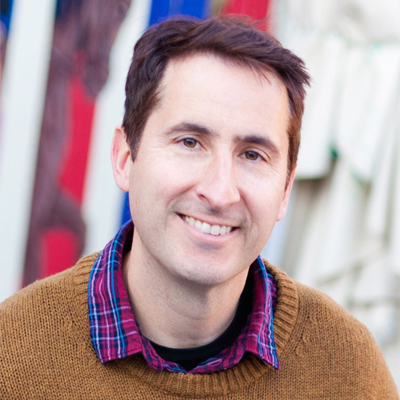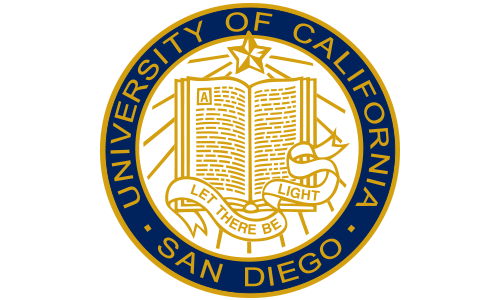Identifying factors related to equal opportunity, job creation, and immigration
Since the Cold War, the U.S. government has watched over the health and vitality of the STEM workforce as a measure of national security. Since the 1980s, the same workforce has become a measure of U.S. economic competitiveness. Other countries have recognized this, and as they develop, they have now joined in on this global race for scientific talent. Dr. John Skrentny is researching the factors that contribute to equal opportunities in the workplace, job development and creation, and those that influence highly-educated immigrants to pursue specific regions for work. In knowledge-based economies such as the U.S., jobs and economic growth, not to mention solutions toward medical, environmental and energy problems, are dependent on innovation. Yet in the STEM fields that approach these problems, many workers with STEM degrees leave the field, and those who do stay are required, by the very rapidly evolving nature of these disciplines, to constantly undergo training just to update their skill set and stay relevant. Further, in many countries highly-educated immigrants drive a high proportion of the innovation, and more countries are entering into the global competition to attract these workers. Dr. Skrentny’s multi-disciplinary research projects are geared toward understanding how to make the science and engineering enterprise stronger and more efficient--and that can pay policy dividends for all societies.
John Skrentny, Professor of Sociology and Co-Director of the Center for Comparative Immigration Studies at the University of California, San Diego, runs a research center focused on immigration and identifying the links between education, jobs, policy, and inequality. For many years, Dr. Skrentny’s focus was on equal opportunities in the workplace that allowed people to promote up to existing jobs. More recently, he has added a new line of research: how can we create enough good jobs for everyone? Many agree that the key to job creation will come through science and engineering, and the innovation provided by these fields; the innovation stemming from new ideas and products will generate new businesses, and therefore economic growth. The question Dr. Skrentny is most concerned with, is “are we pursuing the right avenues to ensure science and engineering to create economic growth?” There is great competition to attract this class of immigrants, and both businesses and policymakers would benefit from knowing which factors are responsible for attracting them to a specific region. Dr. Skrentny’s newest, and arguably most critical project, is starting as a social science intellectual survey that looks at the socio-economic factors that influence an immigrant’s decision to migrate to a specific region, in order to establish a knowledge base for further analytical analysis. Understanding these processes would provide a major contribution to academic research on the dynamics of skilled migration, and also yield insights to regions seeking to attract the migrants.
Current projects are concerned with three areas of research:
-
Examining how workers in science, technology, engineering and math (STEM) fields keep their skill sets up-to-date in the face of continual technological change.
-
Developments in the STEM fields occur so often that workers in these disciplines are constantly required to update their skill set with the newest technological developments to stay relevant and competitive in the field, often at a personal cost. Dr. Skrentny is examining the use of work-related training programs by STEM workers in comparison with non-STEM workers, and also within STEM fields, to understand how workers in fast-changing fields, as well as older workers, cope with change. One facet of this project is working with the Dean of the UCSD Extension School to learn how research university extension schools play a role in connecting workers with employment opportunities in San Diego and other cities. Another approach is analyzing National Science Foundation (NSF) data to observe what’s happening to different workers in different fields, which workers are receiving training, and what factors make a worker more likely to receive additional training. The ultimate goal of this project is to usher the U.S. into a position where we can invest in our own workers, and not rely so heavily on immigrants.
-
-
Questioning why so many STEM workers leave STEM fields.
-
Some measures indicate that more than 60 percent of Americans with STEM degrees do not work in STEM-related jobs. In fact, many of Dr. Skrentny’s physicist friends from graduate schools followed careers on Wall Street, rather than dedicating their knowledge to science and engineering. He is using NSF data to examine the different pathways that take STEM-degree holders away from STEM jobs--but sometimes also bring non-STEM degree holders into STEM. He is working to discover where these workers are going and where the international demand for STEM workers is, through mathematical analysis on existing surveys and data sets in order to uncover patterns.
-
-
A third line of research, and one that has received considerable national and international interest in recent years, examines how different cities and countries can win the so-called "battle for the brains"--the global competition for highly-skilled immigrants.
-
With colleagues from Oxford University, Dr. Skrentny is developing a project that would survey potential skilled migrants before they move with the goal of identifying their values and their impressions of potential destinations--city and country "brands" as depicted in the media--in order to learn how these migrants decide where to go. Policy surrounding this issue in Washington has been very simplistic: more STEM workers is always better, and simply letting immigrants into the country, and allowing those that receive their education in the U.S. stay and work, will ‘magically’ materialize into benefits. Yet there are a number of unanswered questions surrounding this simplistic discourse. Dr. Skrentny’s collaborators at Oxford are particularly talented at gathering massive amounts of data, and performing statistical analysis to understand the depiction of different locations various media, but he wants to push it a step further by generating his own surveys.
- The survey process will begin with identifying several population groups of potential migrants and will then ask them questions focused on revealing: What are their destination preferences, how do these vary between different types of migrants, and where do these preferences come from? Also, what are their preferred media sources? Based on existing data, this survey would likely deal with five populations, the American Midwest, China, India, Spain, and likely Singapore, all of which produce a proportionally high number of migrant engineers. Influential factors for determining where a migrant might end up are typically a stable income and job security for people coming from poorer countries, but for migrants leaving developed countries, more factors, such as quality of schools, quality of life, opportunities for their kids, weather, etc., come into play. This information would then be compiled into a global index for migrant destinations, and be used to assemble a database that could inform policymakers what they are doing correctly--or incorrectly. Understanding these factors will inform policymakers on ways to attract certain immigrant populations and persuade them to stay. With this system, we would be contributing to a more efficient use of global talent, helping skilled STEM workers find the right destinations for their needs, and helping different destinations attract the talent needed for growth and job creation.
-
Bio
Dr. Skrenty’s maternal grandmother was an immigrant, and did not have the opportunity to receive very much formal schooling in her life. In fact, Dr. Skrentny was the first in his family to earn a Ph.D. He believes that academics should study real-world problems and seek to provide useful answers. He is not motivated to create elegant theories or models simply for their own sake--any model must have direct and practical applications for real-world issues. When he sees political controversy, he sees the opportunity, and need, for research. This belief stems largely from Dr. Skrentny’s humble backgrounds; if he cannot explain his research to family members or friends who never enjoyed a university education, it is not worth doing.
Because of his emphasis on practical, translational research, Dr. Skrenty believes that narrow, disciplinary approaches can only take us so far. Each discipline provides unique and useful perspectives, but almost by definition, will fall short of addressing the full scope and scale of social problems. Taking an interdisciplinary approach is allowing Dr. Skrenty to see the “big picture.” He chose sociology as his home discipline because it is the most encompassing as far as the problems it addresses. He then utilizes other disciplines as needed. He works closely with, and has presented his research to, a wide variety of scholars ranging in fields from sociology to law, history, political science, economics, and public policy.
One significant milestone in Dr. Skrentny’s career occurred during a relatively recent visit to Belgium, where he was invited to speak at the “German Marshall Fund’s Brussel’s Forum,” an “annual, high-level meeting of the most influential North American and European political, corporate, and intellectual leaders to address pressing challenges facing both sides of the Atlantic,” according to the organization’s webpage. Dr. Skrentny had never been to such an exciting conference before; beyond the familiar academic participants there were Congressmen, high-level members of international governments, heads of the World Trade Organization, board-members of the World Bank, including then-president Robert Zoellick, heads of banks, corporate CEOs, and various other world leaders. This first-hand exposure offered Dr. Skrentny the opportunity to understand how these leaders and policymakers think and respond to pressing issues. The most pressing issue (in 2011) was how were jobs going to be created for the millions of unemployed people, and many agreed that the ticket to producing jobs was to grow more scientists and engineers to invent ideas and ultimately new products and services. There was a general consensus at the meeting that scientists and engineers would be the key to solving the jobs crisis.
This experience provided Dr. Skrentny with not just direction, but also validation on his work. He learned on his trip to Belgium that there are important and powerful people discussing the concerns on which his work focused, but they do not have access to solid information to support their claims. Dr. Skrentny sees this as an opportunity to make his research useful and provide wider benefits.
The notion of encouraging engineers to pursue careers in STEM (Science, Technology, Engineering, and Mathematics) fields was further encouraged by watching his roommates from Harvard, who were theoretical physicists and math Ph.D.s, earn doctorates, and then take that skill and expertise and apply it to banking on Wall Street. He noticed several faced difficulty making their skills fit with technology companies, and he realized this was an important problem that needs addressing.
Dr. Skrentny enjoys his work enough that work time and play time are blurred--learning about issues in technology and job creation is nice way to relax. But when not involved in research, Dr. Skrentny enjoys domestic and international travel with his wife, as well playing with their two dogs, exercising, movies, entertaining friends, and experiencing new restaurants and cuisines.
In the News
Videos
Awards
National Science Foundation Grant (for “Who Leaves and Who Arrives? Mapping the Connections between Universities and the Science and Engineering Workforce”), 2013
Alfred P. Sloan Foundation Grant (for “Falling Behind, Moving Up or Moving Out? Worker Training in Science and Engineering”), 2012
“Best Social Sciences Professor,” 2010
Presented by UCSD Guardian
Outstanding UCSD Professor Award, 2009
Presented by Panhellenic Council of the University of California, San Diego
Guggenheim Fellowship, John Simon Guggenheim Memorial Foundation (for “The New Racial Division of Labor”), 2006
Mentor Recognition Award, 2005
Presented by the University of California, San Diego


